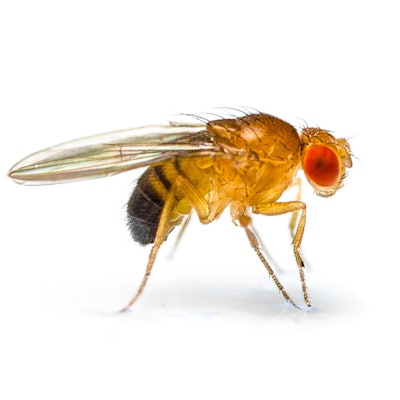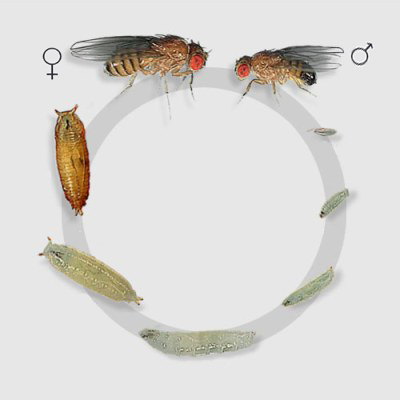Fruit flies, those tiny pests that arise out of nowhere, can quickly evolve into nuisances in homes, restaurants, and grocery stores. Despite their diminutive size, fruit flies can be incredibly persistent, seemingly multiplying overnight and infiltrating every corner where fruits and vegetables are present. While they may seem harmless, their presence can be unsightly and unhygienic, not to mention frustrating for those trying to maintain a clean environment. In this focus, we will examine the world of fruit flies, exploring their biology, habits, and, most importantly, practical strategies for eliminating them from your living spaces.

Understanding Fruit Flies
Fruit flies, known as Drosophila melanogaster, are tiny bugs in the family Drosophilidae. They are commonly found around ripe or decomposing fruits, veggies, and fermented liquids such as wine, beer, and vinegar. These insects are attracted to the sugars and yeast produced during fermentation, making them frequent visitors to kitchen countertops, garbage bins, and compost piles.
Fruit flies are known for their rapid reproductive rates, with a single female capable of laying up to 500 eggs in her short lifespan. These eggs become naiads, commonly called larvae, which feed on the decaying organic matter. Within days, the larvae pupate and emerge as adult flies, ready to continue the cycle. This rapid life cycle allows fruit fly populations to explode under favorable conditions, making them particularly challenging to control once established.
Identifying the Problem Of Fruit Flies
Identifying the source of a fruit fly infestation is crucial to combat the problem effectively. In general, fruit flies are often observed swarming around fruits and vegetables, leading to the assumption that these items are the source of the infestation. However, the source may be concealed in unexpected places such as drains, garbage disposals, or recycling bins where organic matter accumulates, providing an ideal breeding ground for fruit flies. Therefore, to determine the actual source of the infestation, it is essential to thoroughly inspect the premises, including all areas where fruits and vegetables are stored or consumed and where organic matter accumulates.
Get Rid Of The Fruit That's Luring The Fruit Flies
Once the source of the infestation is identified, proper cleaning and sanitation of these areas can help eliminate the problem. This involves removing any organic matter that may be present and using appropriate cleaning agents to disinfect the area. It is essential to note that fruit flies can lay eggs in tiny cracks and crevices, so it is crucial to clean all areas thoroughly. storage and disposal of fruits and vegetables is also essential to prevent the attraction of fruit flies. All fruits and vegetables should be stored in airtight containers or refrigerators to avoid exposure to the open air. Additionally, all garbage and recycling bins should be emptied regularly and cleaned thoroughly to prevent organic matter accumulation.
These measures can successfully tackle a fruit fly infestation and keep your surroundings clean and hygienic. You can preserve a beneficial and safe environment by being diligent and proactive in preventing fruit fly infestations.
Keep Your Garbage Can Empty To Get Rid Of Fruit Flies
To identify the origin of the infestation, inspect locations where fruit flies are generally found, paying close attention to any signs of decaying organic material. Additionally, consider factors that may attract fruit flies, such as overripe fruits, unsealed garbage bins, or spills of sugary substances. By recognizing and managing the underlying reason for the infestation, you can effectively prevent fruit flies from returning after elimination.
Effective Elimination Strategies To Rid The Fruit Flies
Once you have identified the source of the fruit fly infestation, it is time to implement strategies for eradication. While chemical pesticides are available for controlling fruit flies, many people prefer non-toxic methods, especially in areas where food is prepared or consumed.
Here are some effective strategies for eliminating fruit flies naturally:

Sanitation: The most crucial step in eliminating fruit flies is to remove their food and breeding sources. Dispose of overripe fruits and vegetables promptly, and keep kitchen surfaces clean and spills-free. Empty and clean garbage bins regularly, ensuring that lids are tightly sealed to prevent access by fruit flies.
Drain Cleaning: Fruit flies often breed in moist, organic matter in drains and garbage disposals. Regularly clean and sanitize drains using a combination of baking soda, vinegar, and simmering water to break down organic buildup and eliminate potential breeding sites.
Traps: Homemade fruit fly traps can reduce adult fly populations. To trap fruit flies, put apple cider vinegar in a dish, cover it with plastic (with holes), and place it near infested areas. The flies are lured to the smell of the vinegar or wine, enter the trap through the holes, and become trapped inside.
Natural Repellents: Certain scents are known to repel fruit flies and can be used to deter them from infesting your home. Oils such as citronella, peppermint, and eucalyptus can be diluted in water and sprayed around doorways, windows, and other entry points to discourage fruit flies from entering.
Biological Control: In some cases, introducing natural predators of fruit flies can help reduce their populations. Predatory insects such as parasitic wasps or predatory mites feed on fruit fly eggs and larvae, effectively controlling their numbers without chemical pesticides.
Seal Entry Points: Prevent fruit flies from entering your home by sealing gaps around windows, doors, and vents with weatherstripping or caulk. This helps keep fruit flies out and improves energy efficiency by reducing drafts.
Monitor and Prevent Recurrence: Even after successfully eliminating fruit flies from your home, it is essential to remain vigilant and implement preventative measures to avoid future infestations. Regularly inspect fruits and vegetables for signs of decay, maintain cleanliness in food storage and preparation areas, and promptly address any spills or leaks that may attract fruit flies.
Fruit flies may be small, but their presence can quickly become a significant annoyance if left unchecked. By understanding their biology and habits and implementing effective elimination strategies, you can successfully rid your house of fruit flies and stop coming infestations. Whether using natural remedies, traps, or preventative measures, taking proactive steps to control fruit flies will help preserve a spotless and hygienic environment for you and your family.


















































